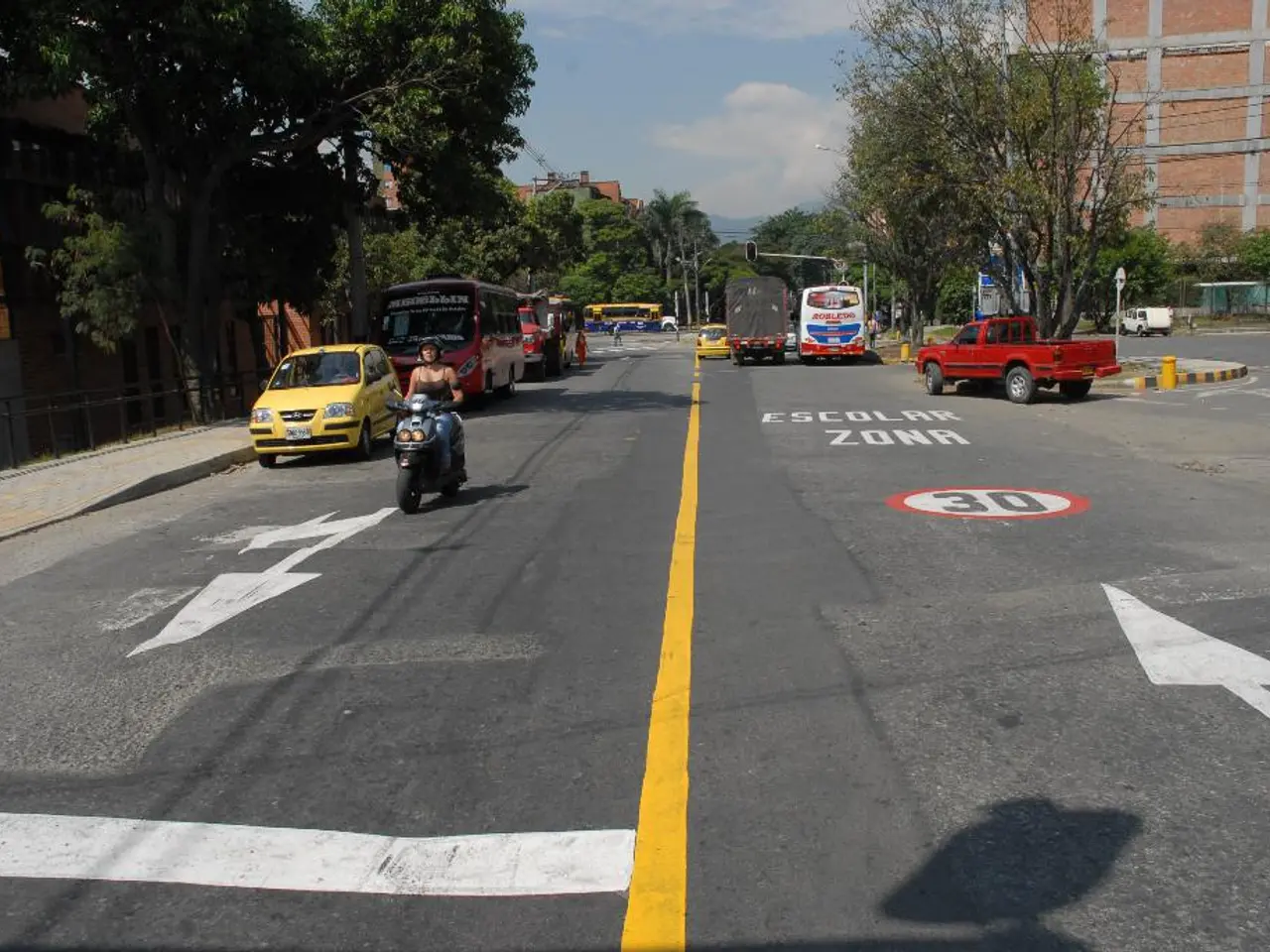Navigating Toll Charges and Environmental Zones: An abroad traveler's guide
Foreign environmental zones necessitate careful attention according to ADAC - Foreign Countries Incorporate Environmental Zones, According to ADAC
As vacation time sneaks up, it's essential for motorists to educate themselves on regulations such as environmental zones in neighboring countries of North Rhine-Westphalia before hitting the road. Thomas Muther, spokesman for ADAC North Rhine, encouraged this, stating to dpa, "The effort to inform yourself before the trip is much less than having to deal with a hefty fine afterwards."
This isn't just a matter of speed limits. European cities have stringent access restrictions or bans on certain diesel or gasoline vehicles, environmental zones, or even city tolls. In some instances, entry is conditional on possessing a paid environmental sticker.
The ADAC offers an overview of access restrictions in Europe, listing environmental zones in cities such as Antwerp, Brussels, and Ghent in Belgium, where there is a registration requirement for German vehicles. In France, for example, paid environmental stickers are required in several cities permanently or seasonally. There are also environmental zones in various Dutch cities with age-based restrictions for older cars based on emissions standards.
"We advise drivers who travel with their own vehicle in Europe's major cities to check any specific regulations that may apply in advance," emphasized the ADAC spokesman. Ignoring these often results in steep fines.
Environmental Zones in Europe are part of a broader initiative to reduce pollution by restricting entry of more polluting vehicles based on their emissions. As of 2022, over 320 of these zones are active, projected to surpass 500 by 2025. These zones aim to minimize tailpipe emissions and promote zero-emission vehicles and the shift from private car use to sustainable transport modes.
France has implemented Low Emission Mobility Zones (ZFE), covering major cities, with 12 zones operational by the end of 2024 and an additional 30 urban areas required to implement ZFEs by 2025. From January 1, 2025, French ZFEs will ban diesel vehicles over 14 years old and petrol vehicles over 19 years old. Vehicles without a Crit'Air sticker (unclassified vehicles) are also prohibited. The Crit'Air system classifies vehicles based on their emissions, and only vehicles meeting certain criteria are allowed in most zones. Specifically, vehicles categorized as Crit'Air 3 like older diesel and petrol cars are banned from 2025. Unclassified vehicles (cars registered before 1996, commercial and heavy goods vehicles registered before 1997 or 2001) are increasingly prohibited from these zones, with fines for non-compliance.
German vehicles must abide by the same national environmental zone standards as others when entering foreign or domestic Low Emission Zones (LEZs) and display the correct emissions sticker (Umweltplakette). The Umweltplakette categorizes vehicles based on their emission levels, with vehicles wearing a green sticker (Euro 4 and above) generally being allowed the most access, whereas yellow or red stickers indicate higher pollution and restricted access. German drivers must affix the appropriate environmental sticker to enter both German and various European LEZs, including those in France.
Failure to display the correct sticker or operating a prohibited vehicle in an LEZ could result in fines, ranging from approximately €80 to €100 in Germany and varying amounts in other countries depending on local rules.
In summary, Europe's major cities have extensive regulations (LEZ, ZFE, ZEZ) related to the entry of high-pollution vehicles based on age, fuel type, and emissions category. French Low Emission Mobility Zones (ZFE) ban older diesel and petrol cars from 2025, employing the Crit'Air sticker system to classify vehicles. German vehicles require an emissions sticker (Umweltplakette), with access typically restricted based on sticker color, and must comply when abroad to avoid fines. It's crucial to familiarize oneself with these rules to dodge hefty fines during travel.




